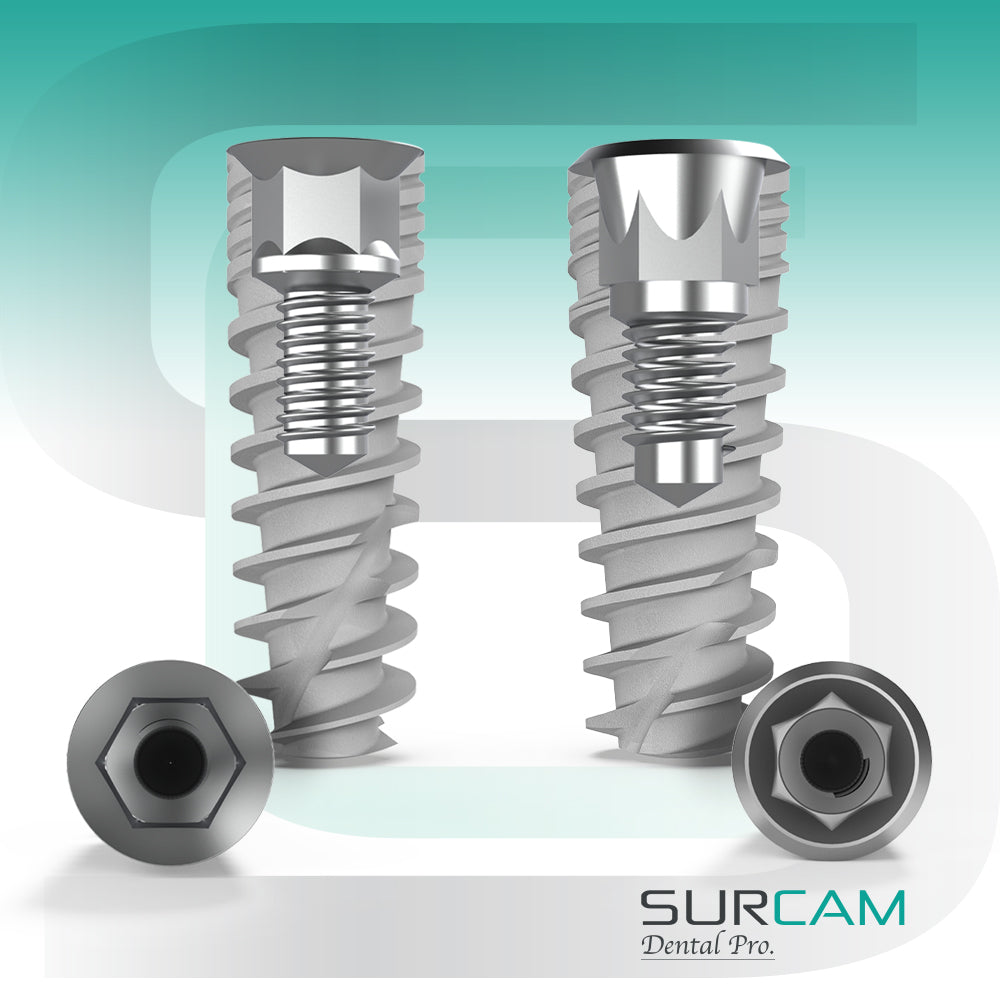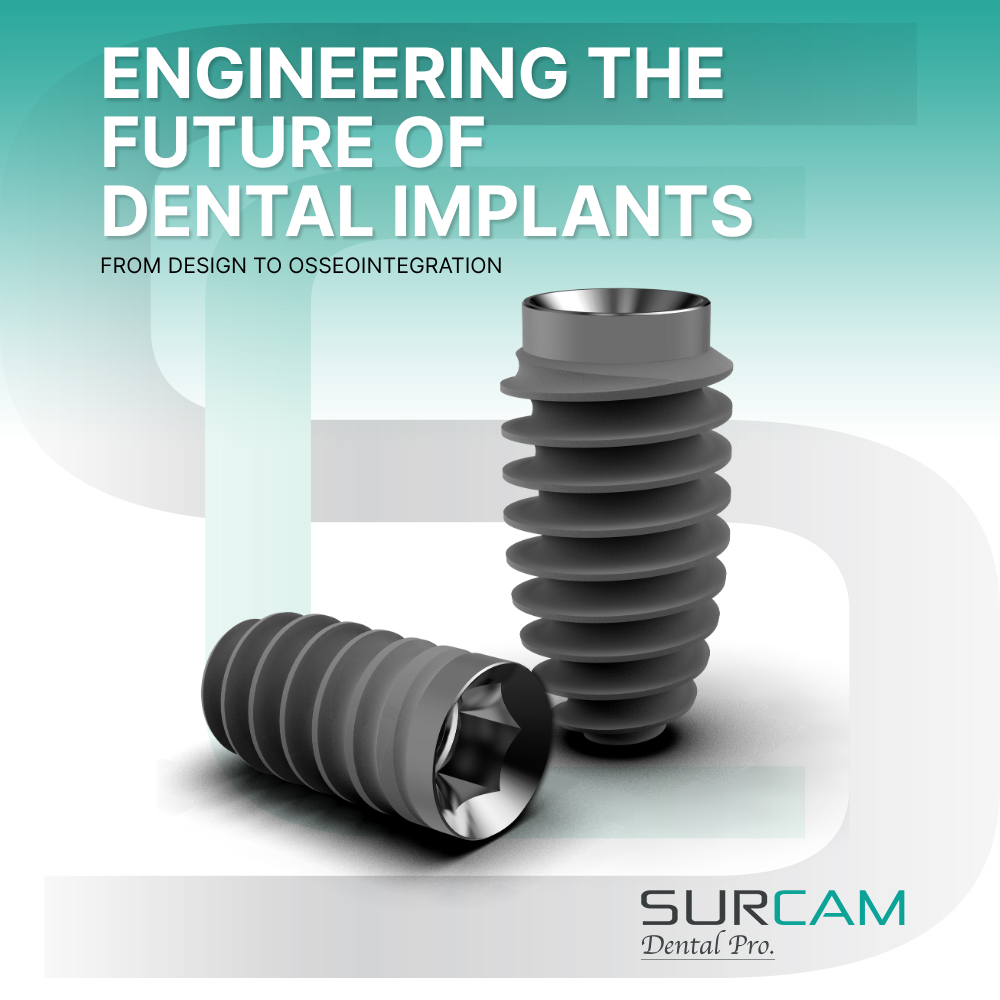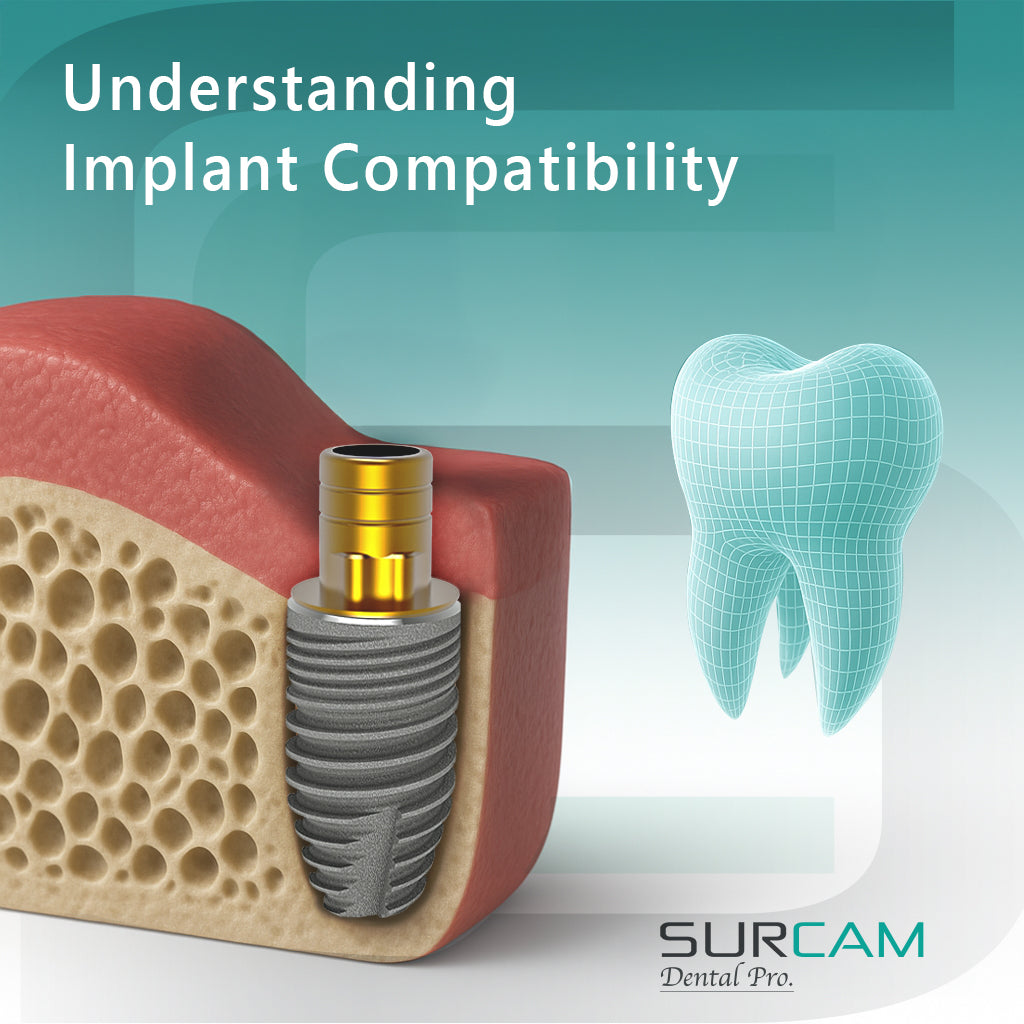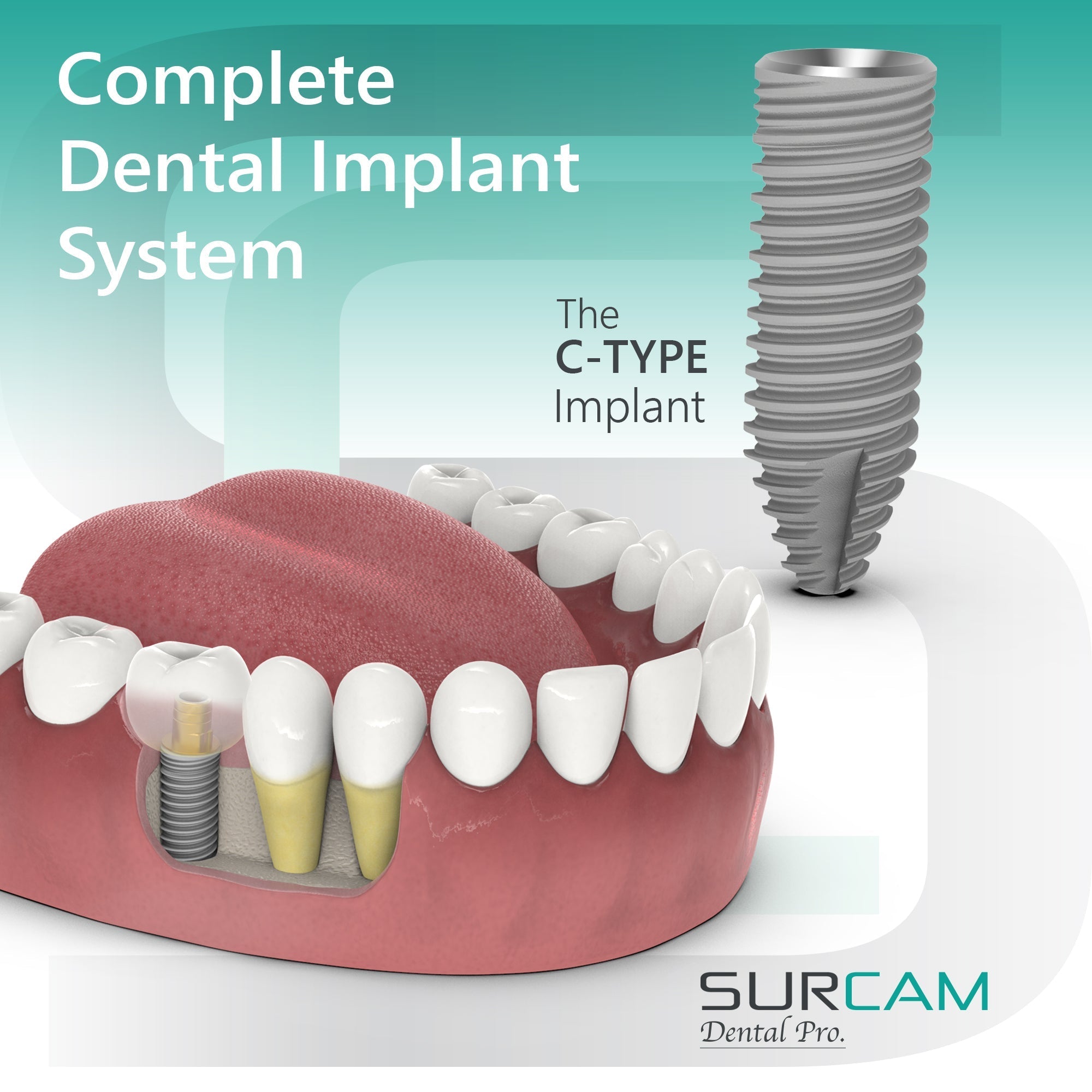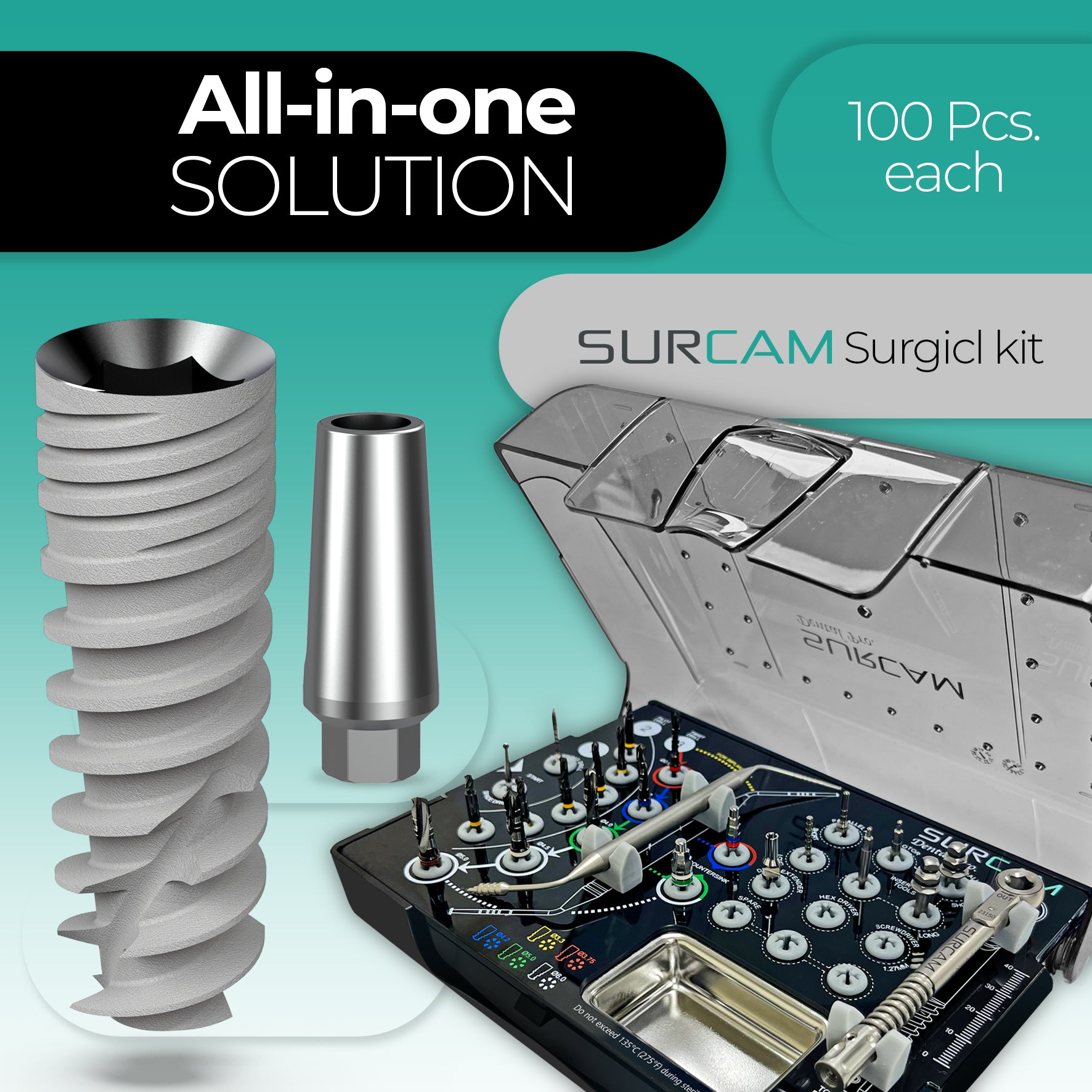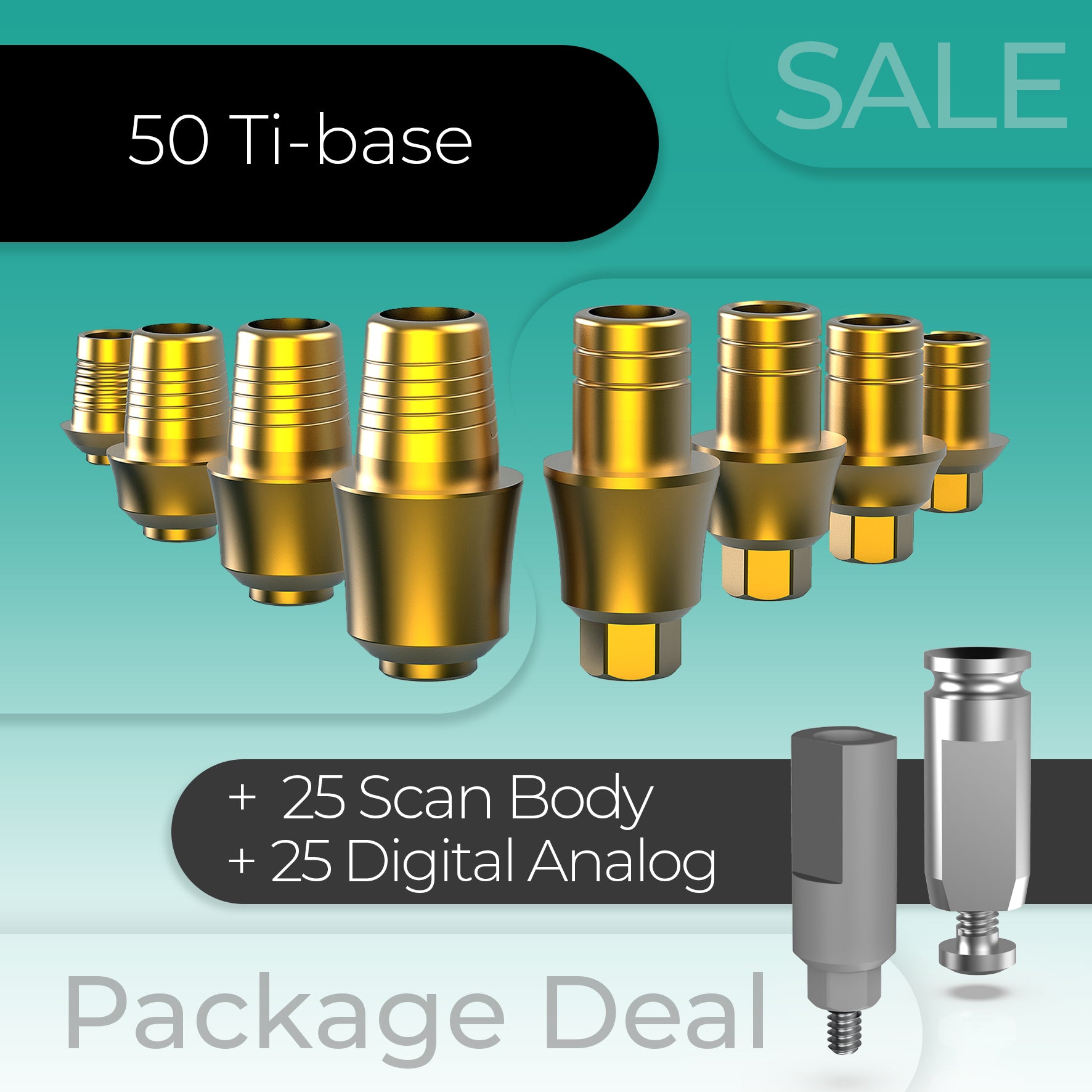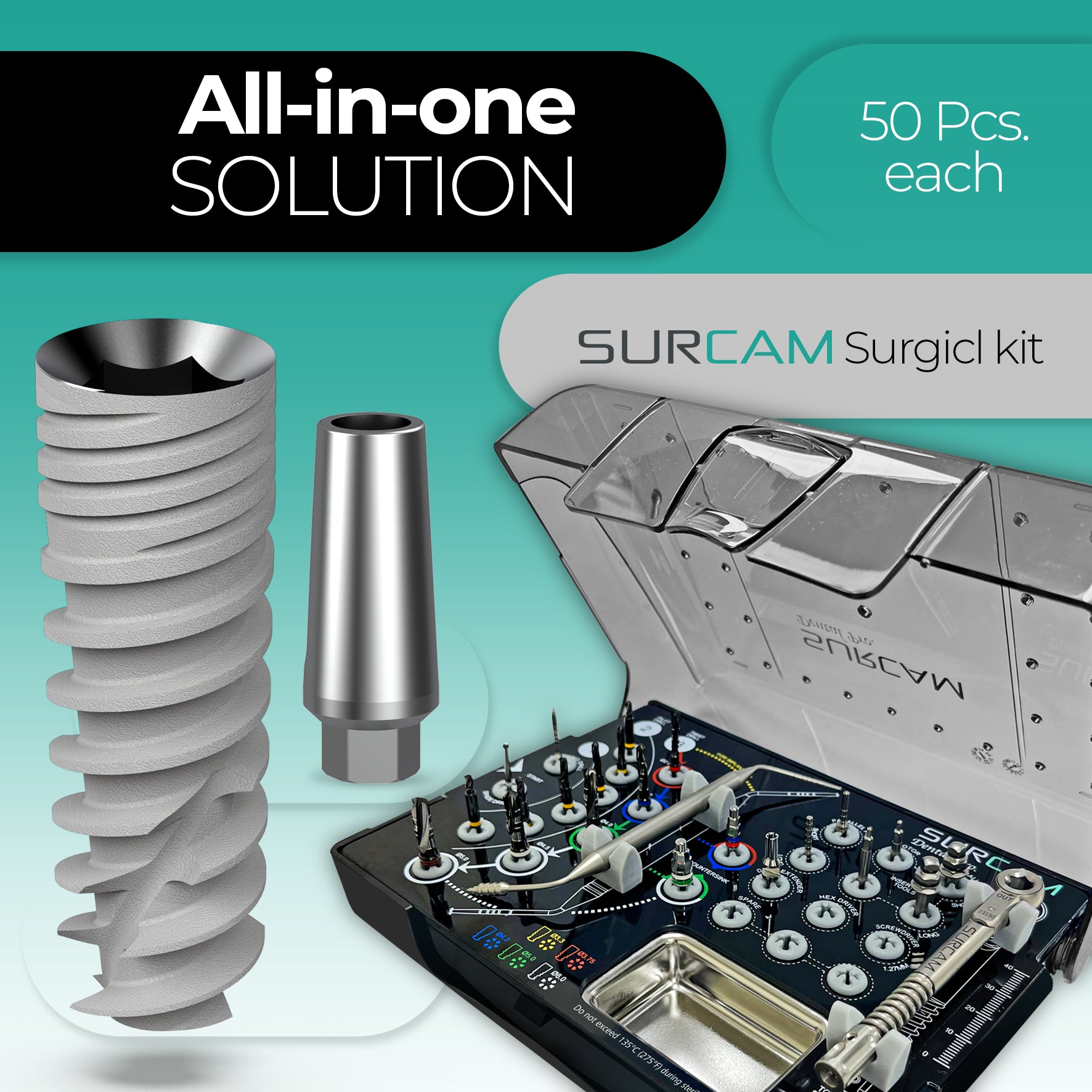Internal Hexagon vs. Conical Connection
- by Shay ben shabat
Internal Hexagon vs. Conical Connection – Clinical Considerations for Today’s Implantologist
In implant dentistry, the design of the implant–abutment connection directly influences long-term clinical success. The interface must resist chewing forces, prevent micromovement, and provide a bacterial seal to protect peri-implant tissues. For decades, the Internal Hexagon (IH) implants were the most widely used connection, valued for their simplicity and broad prosthetic compatibility. More recently, the Conical Connection (CC) implants, also known as the Morse taper, have gained momentum for their superior biomechanical stability and reduced risk of complications.
For dentists, DMD-run clinics, and distributors, understanding the differences between these systems is essential. Choosing the right connection type impacts not only immediate treatment workflows but also long-term outcomes such as marginal bone preservation, prosthetic stability, and patient satisfaction. This article explores the history, clinical strengths, limitations, and evidence base of both designs to guide informed decision-making.

History of Implant Connections
External Hex Origins
The earliest implants, pioneered in the 1960s by Brånemark, used an external hex connection. This design allowed clinicians to easily drive implants into bone. However, mechanical weaknesses quickly surfaced: frequent screw loosening, abutment fractures, and limited ability to manage lateral forces. By the late 1970s, these limitations pushed researchers and manufacturers to look for improved interfaces.
Development of Internal Hex
By the 1980s, the Internal Hexagon connection emerged as the next generation. Moving the connection inside the implant body provided greater resistance to lateral forces and improved prosthetic stability. This became the de facto “industry standard” for decades, offering dentists a reliable and widely compatible solution. Internal Hex implants replaced external hex designs specifically because they offered better resistance to lateral forces and greater long-term stability.
Evolution Toward Conical Connection
Despite the benefits of the internal hex, clinicians continued to encounter challenges such as micromovement, marginal bone loss, and bacterial leakage. In response, the Conical Connection (Morse taper) was developed in the 1990s. By creating a tapered, wedged fit, this design minimized micro-gaps, enhanced load distribution, and improved long-term tissue stability. Conical connections became widely adopted because their design addressed both micromovement and bacterial leakage, two issues that persisted in flat-interface systems.
Internal Hexagon Connection
Design & Mechanics
The Internal Hexagon connection consists of a six-sided recess within the implant body that aligns with a corresponding abutment. This flat-on-flat interface provides anti-rotational stability and became widely adopted for its simplicity. Load transfer occurs across the flat surfaces at the implant crest.
Clinical Strengths
-
Proven reliability: Over 30 years of documentation supports predictable outcomes.
-
Ease of use: Familiar design for most clinicians, streamlining placement and restoration.
-
Cost efficiency: Often more affordable than newer systems, making it attractive for clinics and distributors.
-
Compatibility: Available across a wide range of prosthetic components.
Limitations
The main limitation of the internal hex design lies in its flat interface. This geometry allows tiny rotational shifts under load, increasing the risk of screw loosening and stress at the crestal bone. Over time, micromovement combined with micro-gap leakage can contribute to marginal bone loss and greater risk of peri-implantitis.
Conical Connection
Design & Mechanics
The Conical Connection, also known as the Morse taper, features a tapered interface—commonly 8–12 degrees—that creates a wedged, friction-fit between implant and abutment. This design eliminates the flat-on-flat contact of internal hex systems, reducing gaps and enhancing load distribution along the implant body.
Clinical Strengths
Conical connections are valued for their superior stability. Their tapered interface creates a friction-lock that minimizes micromovement, enhances load distribution, and provides a tighter bacterial seal. Multiple studies confirm that CC implants preserve marginal bone more effectively and reduce the incidence of screw loosening compared to IH systems. They also support platform switching, which helps maintain soft tissue volume and esthetics.
Limitations
-
Precision required: Proper seating of the abutment is critical to achieve full taper engagement.
-
Higher initial cost: Conical systems are often priced above internal hex, though potential long-term savings arise from reduced complications.
Comparison Table: Internal Hexagon vs Conical Connection
| Feature | Internal Hexagon (IH) | Conical Connection (CC) |
|---|---|---|
| Interface Design | Flat-on-flat, six-sided recess | Tapered, wedged Morse taper |
| Stability | Moderate, prone to micromovement | Superior, friction-lock stability |
| Marginal Bone Loss | Higher risk long-term | Lower risk, better preservation |
| Bacterial Seal | Micro-gaps may allow leakage | Tight seal reduces leakage |
| Screw Loosening | More frequent | Less frequent |
| Prosthetic Use | Routine cases, cost-sensitive | Full-arch, high-load, complex cases |
| Digital Workflow | Widely compatible | Increasingly preferred for CAD/CAM |
| Cost | Lower upfront cost | Higher upfront, lower complications long-term |
Biomechanical Considerations
Load Transfer & Stability
Internal hex systems concentrate forces at the crestal bone, which increases stress and can contribute to resorption. In contrast, conical connections distribute occlusal forces deeper into the implant body, lowering crestal stress. By creating a frictional lock, the Morse taper effectively resists micromovement, protecting osseointegration and prosthetic stability.
Screw Stability
Screw stability is another differentiator. Internal hex implants rely heavily on screw preload, which makes them more prone to loosening. Conical systems reduce this reliance, as the tapered fit itself provides stability, lowering the likelihood of screw complications.
Biological Considerations
Marginal Bone Loss (MBL)
Evidence shows that conical implants better preserve crestal bone. For example, a 12-month RCT by Galindo-Moreno et al. (2021) demonstrated less bone loss with conical implants (-0.25 mm) compared to internal hex (-0.70 mm). Long-term studies such as Sanda et al. (2019) confirm the same trend: CC systems lose significantly less bone than IH over five years.
Peri-Implantitis Risk
The tight seal of conical connections lowers the risk of peri-implantitis. By minimizing micro-gaps, CC implants reduce bacterial leakage and the pump effect, which are more common in internal hex designs. This translates into lower infection risk and more predictable tissue stability.
Soft Tissue Stability & Platform Switching
Conical designs also support better papilla height and soft tissue preservation. Their ability to maintain stable platform switching ensures healthier long-term esthetic outcomes compared to IH systems.
Prosthetic & Restorative Implications
Internal Hexagon in Daily Practice
IH systems remain a practical option for routine cases. They are familiar to most dentists, cost-effective, and broadly compatible with cemented abutments and other components. For single crowns or short-span bridges, IH is often sufficient.
Conical Connection in Complex Cases
Conical implants are increasingly chosen for demanding treatments. Their enhanced stability makes them ideal for full-arch rehabilitations (e.g., All-on-4®), high-load posterior cases, and patients with bruxism. They also perform well with multi-unit abutments, reducing complications in advanced prosthetics.
Digital Workflows (CAD/CAM)
Both IH and CC are supported in CAD/CAM workflows, but CC is increasingly preferred due to its precision and emergence profile stability. Explore our IH Ti-Base CAD/CAM components and Conical Ti-Base CAD/CAM collection to see the difference.
Evidence from Clinical Trials & Reviews
Clinical research consistently demonstrates that conical connections outperform IH in preserving bone and reducing complications, while both maintain excellent survival rates. Esposito et al. (2017) found no survival difference between the two systems after one year, but Galindo-Moreno et al. (2021) and Sanda et al. (2019) confirmed less bone loss with CC over short and long-term follow-up. A meta-analysis by Rodrigues et al. (2023) also concluded that CC implants significantly lower the risk of prosthetic complications compared to IH.
Market Trends & Adoption
Clinical use patterns highlight a shift toward CC implants. A laboratory survey showed custom abutment prescriptions for CC increased by 286% between 2011 and 2015. Manufacturers are now launching most new systems with conical platforms, reflecting clinician demand for better stability and lower complication rates. Distributors and clinics are also adapting by stocking more CC-compatible components and prosthetics.
Practical Guidance for Clinicians
IH remains suitable for cost-sensitive, routine treatments, while CC is increasingly preferred for complex or high-load protocols. Dentists often select IH for single-unit restorations where affordability and compatibility matter most. Conical implants are recommended for full-arch rehabilitations, bruxism patients, and cases where bone and soft tissue preservation is critical. Cost considerations should include not only initial component pricing but also the potential long-term savings from fewer complications with CC systems.
Surcam Dental Solutions
At Surcam Dental, we recognize that both connection systems have a place in modern implantology. That’s why we manufacture and supply FDA-approved, CE-certified implants in both Internal Hexagon and Conical Connection designs.
Benefits of Choosing Surcam
-
Direct-from-manufacturer pricing: Cost savings without compromising quality.
-
Full compatibility: Our components are designed to integrate seamlessly with major global systems such as Nobel Active®, Zimmer®, Alpha-Bio®, and more.
-
Trusted by clinicians and labs: Used in clinics worldwide for both routine and advanced cases.
-
Comprehensive portfolio: From implants to abutments, multi-unit parts, and surgical accessories.
Explore Our Collections
By offering both systems, Surcam ensures dentists, DMD-run clinics, and distributors can choose the right solution for every patient scenario.
Conclusion
The Internal Hexagon connection has served implant dentistry well for decades, offering simplicity and affordability. Yet, the evolution toward Conical Connections reflects their superior biomechanical performance, bacterial sealing, and marginal bone preservation.
For clinics, DMD practitioners, and distributors, the decision is not about replacing IH entirely, but about strategic selection: IH for routine restorations, CC for demanding or long-span cases.
At Surcam Dental, we deliver both systems - ensuring clinicians worldwide can match the right implant design to every patient’s need.
👉 Explore our full Implantology Collection today.













